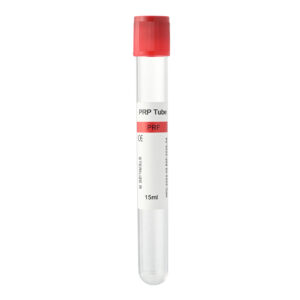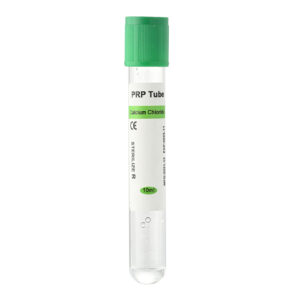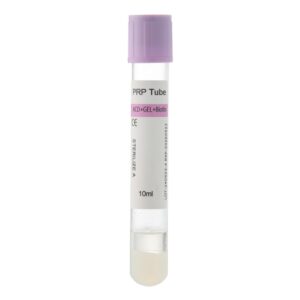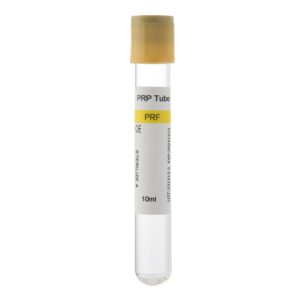PRP (Platelet-Rich Plasma) therapy has gained significant attention for its effectiveness in cosmetic and rehabilitation treatments. PRP therapy uses a patient’s blood to extract platelet-rich plasma, which is then injected to promote tissue regeneration and repair, improving skin quality or relief from joint pain. To maximize treatment results and minimize potential side effects, it is essential for patients to follow specific care guidelines before and after PRP treatment. These recommendations help patients achieve the best possible outcomes and reduce unnecessary complications.
How PRP Therapy Works
PRP therapy uses the growth factors found in platelets to stimulate cell regeneration and collagen production, accelerating tissue repair and regeneration. By injecting high concentrations of platelets into targeted areas, it effectively improves skin texture, reduces fine lines, and alleviates joint pain.
Pre-Treatment Preparation
- Avoid Non-Steroidal Anti-Inflammatory Drugs (NSAIDs): Avoid using NSAIDs such as ibuprofen and aspirin for at least 7 days before treatment, as these drugs may impair platelet function and reduce the effectiveness of PRP. If you are taking other medications, be sure to inform your doctor so they can assess whether adjustments are needed.
- Stay Hydrated: Ensure adequate hydration the day before treatment, as this will help with the blood draw process and improve the quality of the blood sample. Drink 8-10 cups of water daily to keep your body in good condition.
- Avoid Alcohol and Smoking: Avoid alcohol and smoking for at least 24 hours before treatment, as they can affect platelet quality and treatment efficacy. Alcohol and nicotine reduce platelet activity, diminishing the benefits of PRP.
- Maintain a Balanced Diet: On the day of treatment, have a light meal and avoid high-fat and high-sugar foods. A balanced diet supports better blood circulation and platelet extraction. Foods rich in antioxidants, such as blueberries and spinach, can also help enhance treatment results.
Post-Treatment Care
- Avoid Touching and Massaging the Treated Area: Refrain from touching, massaging, or pressing the treated area for the first 24 hours after PRP injection to avoid disrupting the absorption and effectiveness of PRP. Mild swelling and redness are normal and typically subside within a few hours to a few days.
- Keep the Treated Area Clean: Keep the injection site clean and dry to avoid contamination or infection. If necessary, gently clean with saline solution. Avoid using harsh cleansers or skincare products that may irritate the skin.
- Avoid Strenuous Exercise and Heat Exposure: Avoid strenuous exercise, saunas, steam baths, and sun exposure for 48 hours after treatment to reduce swelling and discomfort in the treated area. High temperatures may exacerbate inflammation and affect results.
- Avoid Using Makeup: If PRP is injected into the face, avoid applying makeup for at least 12 hours after treatment to give the skin sufficient time to recover and absorb PRP. Use gentle, non-irritating skincare products to support skin recovery.
- Use Pain Relievers Wisely: If you experience mild discomfort or pain after treatment, consult your doctor about using pain relievers that do not interfere with PRP effectiveness, such as acetaminophen (Tylenol). Avoid NSAIDs like ibuprofen to maintain treatment efficacy.
Other Considerations
- Regular Follow-Ups: PRP results typically appear a few weeks after treatment, but multiple sessions may be needed for optimal results. Follow your doctor’s recommendations for follow-up appointments and additional treatments. At each follow-up, the doctor will evaluate your progress and adjust your treatment plan accordingly.
- Use Skincare Products as Directed: For facial PRP treatment, your doctor may recommend supplementary skincare products to support the recovery process. Follow your doctor’s instructions to maximize results. Skincare products containing hyaluronic acid, vitamin C, and other beneficial ingredients can help promote skin recovery and enhance results.
- Maintain a Healthy Lifestyle: A healthy lifestyle—including a balanced diet, regular exercise, and adequate sleep—can enhance PRP’s effectiveness. Avoiding excessive stress and fatigue is crucial, as stress can hinder the body’s healing ability. Increasing protein-rich foods such as fish, eggs, and legumes can support tissue repair.
Frequently Asked Questions
- How Long Does It Take to See Results from PRP? Initial results usually appear within 2-3 weeks after treatment, but optimal results may take 3-6 months to fully develop. This varies depending on the individual’s condition and the healing speed of the treated area.
- Is PRP Therapy Safe?PRP therapy uses the patient’s blood, which eliminates the risk of allergic reactions. While mild swelling or pain may occur after treatment, these symptoms usually resolve within a few days.
- How Many PRP Sessions Are Needed? The number of sessions depends on the treatment goal and individual factors. Cosmetic treatments typically require 3-4 sessions, while rehabilitation treatments may require more. Your doctor will create a personalized treatment plan based on your specific needs.
Conclusion
PRP therapy is a safe and effective treatment that can improve skin quality and promote tissue healing. However, pre-and post-treatment care is crucial for achieving the best results. By following the above care guidelines, patients can minimize side effects and promote faster recovery. If you have any questions, consult a professional healthcare provider. With active patient participation, PRP treatment can deliver optimal results and greater satisfaction.





